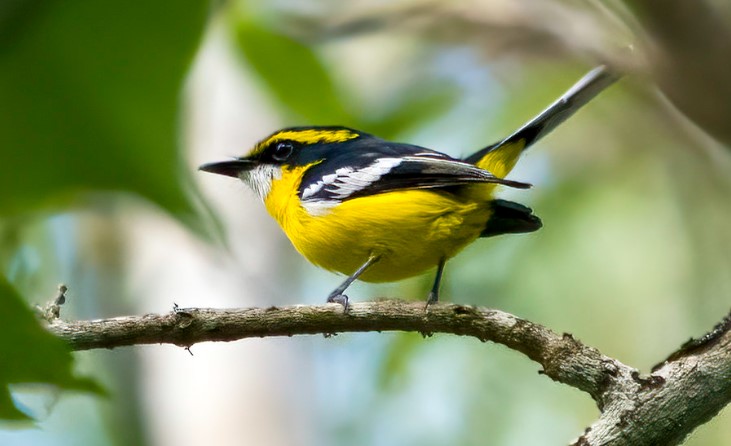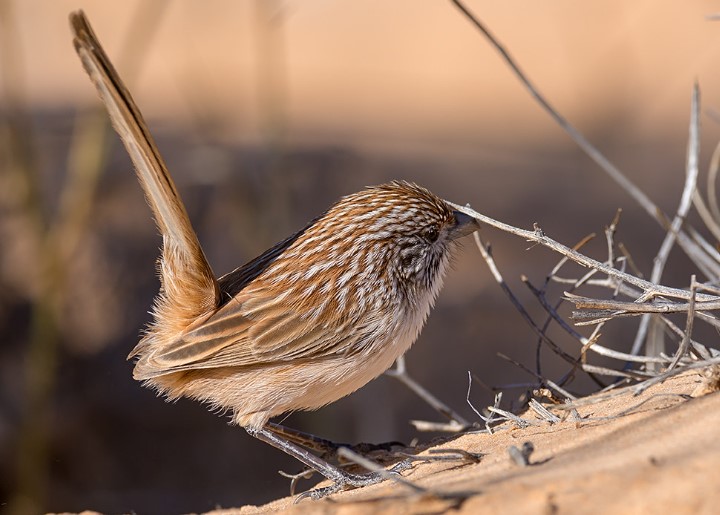The yellow-breasted boatbill (Machaerirhynchus flaviventer) inhabits the middle and upper strata of lower-altitude rainforests in northeastern Queensland. A yellow-breasted boatbill is a bird in the Machaerirhynchus genus, belonging to the Machaerirhynchus family. Foraging takes place either alone or in pairs. A yellow-breasted boatbill swoops out from its perch to catch fast-moving insects in midair and then returns to eat them. Sometimes, boatbills feed with mixed flocks of other birds.
Boatbills call constantly in their soft, wheezy trills while moving through the forest in a crouch; at rest on twigs, they sit upright and quiver their tails occasionally. Birds display their excitement by cocking their tails like wrens. The males may fly back and forth on a line of about 30 meters, continuously calling to one another.
Males are primarily responsible for nest-building. It usually takes about a week for the nest to be complete. Incubation responsibility is shared by both sexes, changing at irregular intervals. Relieving birds call as they approach their nests, but the sitting birds will not leave until the relieving bird has hopped within a few centimeters of the nest.
The unusually shaped and disproportionately sized bill of this species of bird is the result of a physiological adaptation to hunting airborne insects. Further, it has a hooked beak tip that allows it to forage along the forest floor and across the canopy for insect prey.

Also known as boat-billed flycatchers, yellow-breasted flatbills, or yellow-breasted flycatchers The yellow-breasted boatbill measures approximately 115–120 mm in length. Male birds have olive-green to almost black upper parts. It has a black crown and tail, along with three white-tipped outer tail feathers.
The upper wing coversts from green to black, tipped with white. There are black flight feathers with pale yellow edges on the inner secondaries. The lores, face, and ear covers are black, and the eyebrows are bright yellow. The chin and throat are white, while the breasts and undertails are rich yellow. The eyes are dark brown in color. The bill is black with a bone tip. The feet are leaden.
Female Yellow-breasted Boatbill upper parts are usually dull olive in color. The eyebrows are cream-yellow, and the breasts are yellow with dusky flecks. There are small talons on the end of the four-toed foot of the yellow-breasted boatbill, including the bird’s rear metatarsals. The breasts and bellies of immature birds are paler and heavily flecked with dusky color.
Yellow-breasted Boatbills are, in short, repeated chips. Yellow-breasted Boatbills do, however, sing several short, soft, sweet whistles throughout their song. The mating calls of boatbills have been described as songs. The song changes in inflection before ending with a soft trill wit-wit-zee-ee-ee-with male. In every stanza, there is a short chip between each one that links them into a series.
Nesting and breeding take place between September and March. Plant stems and vine tendrils are bound together with cobwebs to create the nest. Nests are lined with finer tendrils and suspended in leafy horizontal forks 3–25 meters in height. Observed from underneath, boatbill nests are described as being translucent and quite flimsy. Although nests are not structurally sound, they serve their purpose nonetheless, as they hold only two eggs and one parent simultaneously, regardless of structural stability. The bird lays a pair of slightly lustrous white eggs dotted with red and purple spots.
A majority of the eggs are concentrated at the larger end and are oval-shaped, about 17 x 13 mm. Both sexes are involved in incubation. From the Cape York Peninsula to Ingham, Queensland, yellow-breasted boatbills are found in lowland and hilly rainforests. New Guinea and nearby islands are also home to this species. Yellow-breasted boatbills can be found in abundance throughout their natural habitat, regardless of altitude.
In Australia, there are only two races. IUCN’s Red List of Threatened Species classifies the yellow-breasted boatbill as the least concern. In spite of this, boatbills are considered among the top 100 species of terrestrial Australian birds that are most susceptible to climate change.







